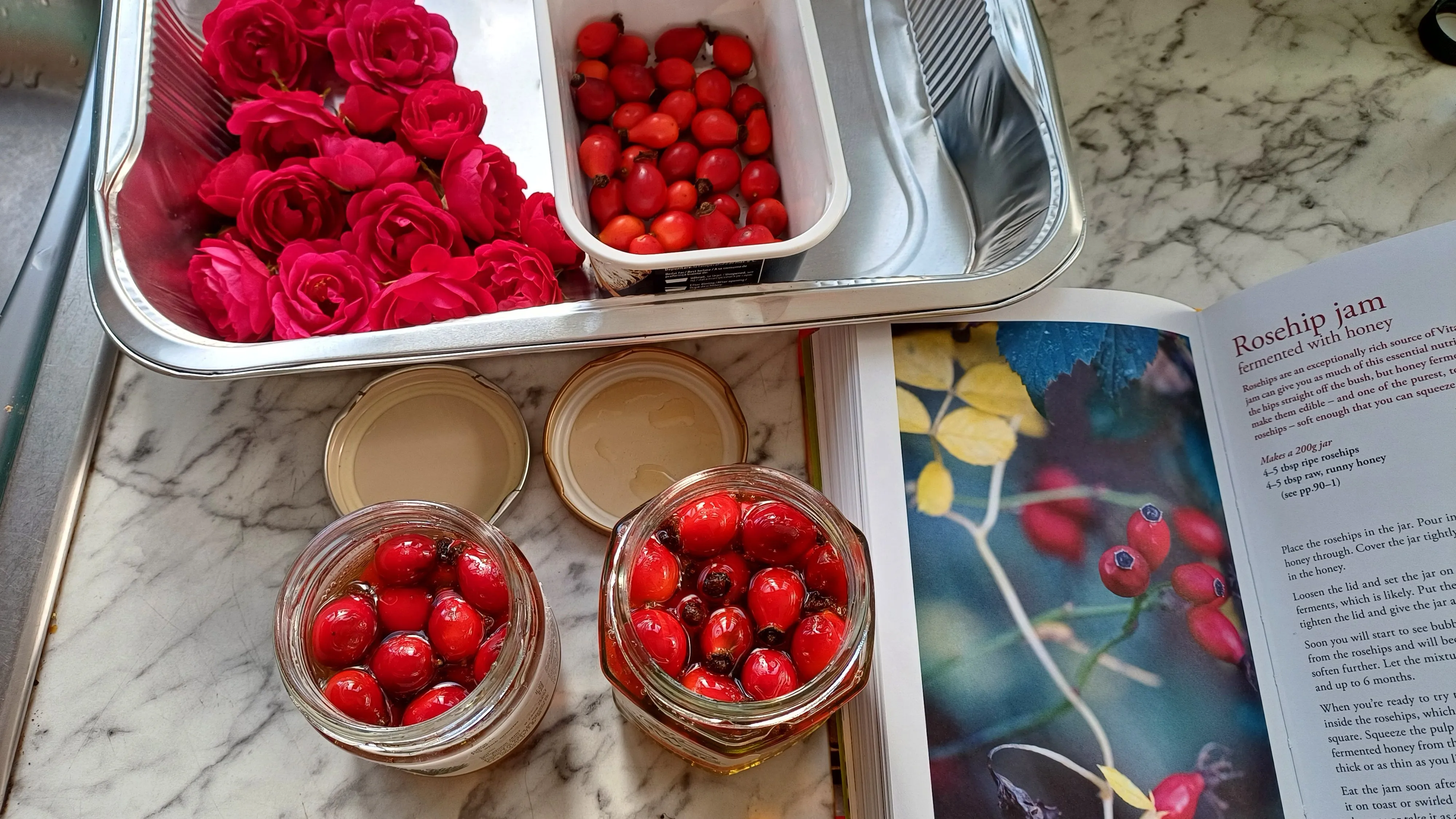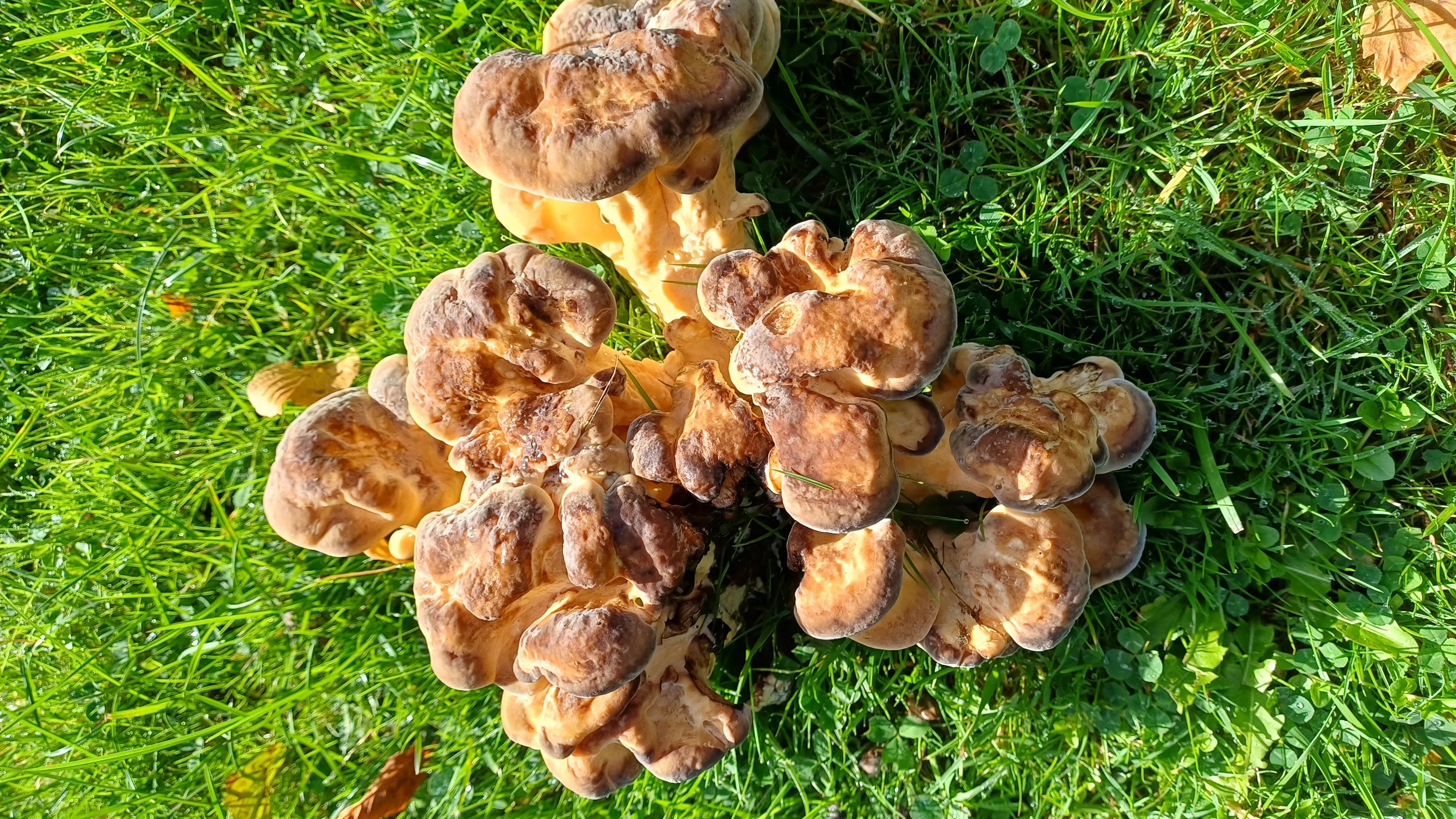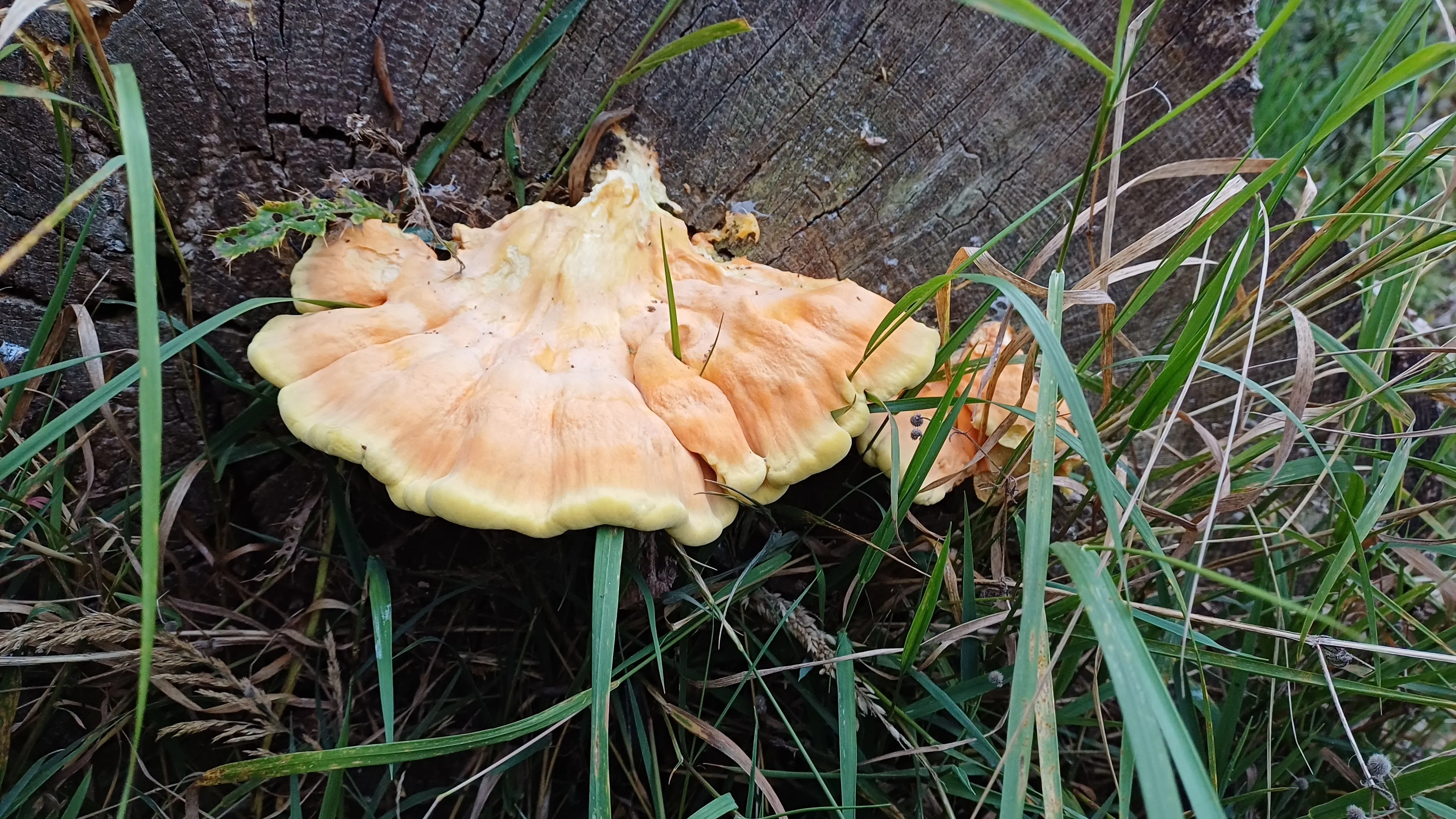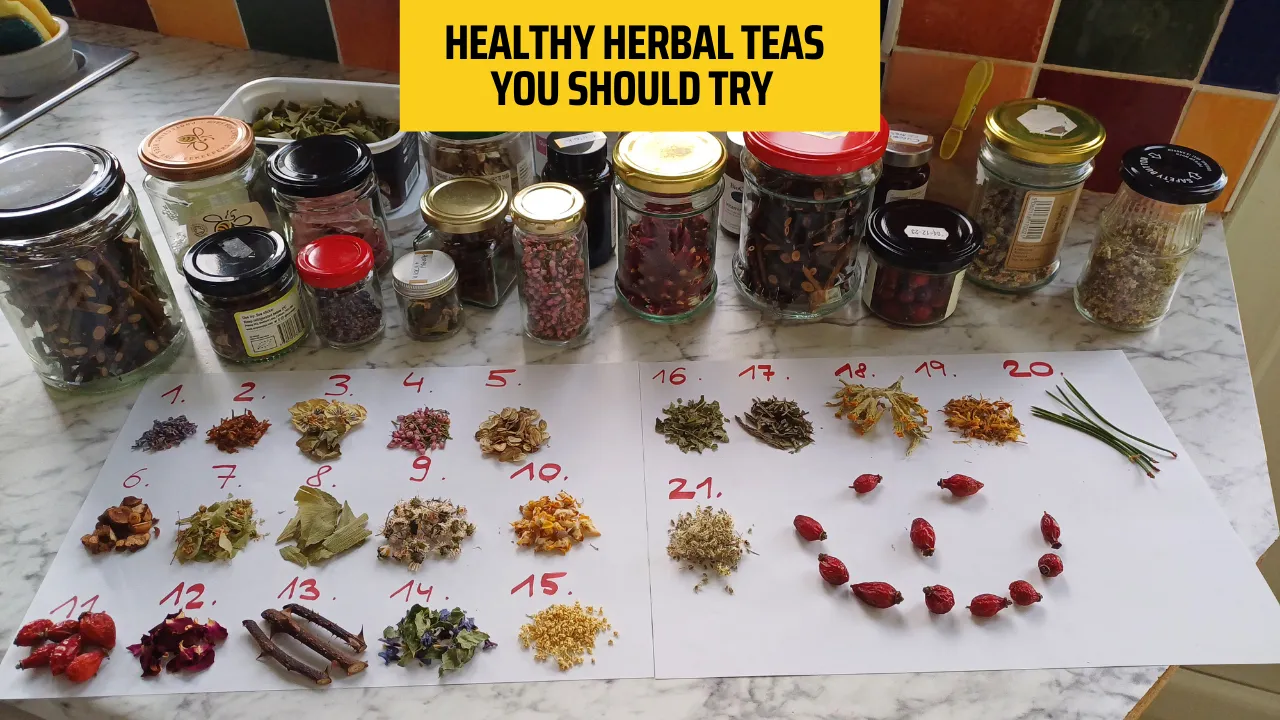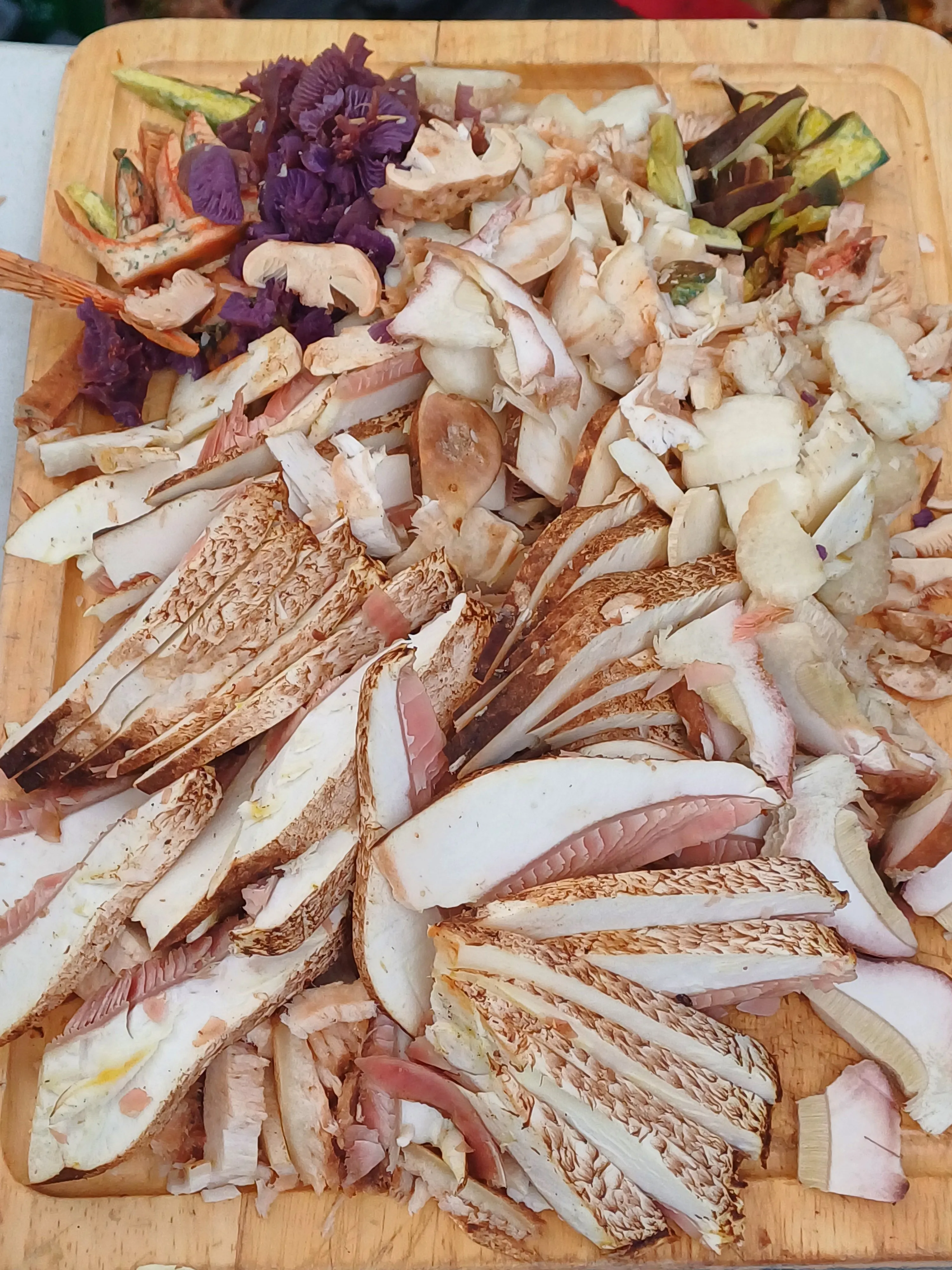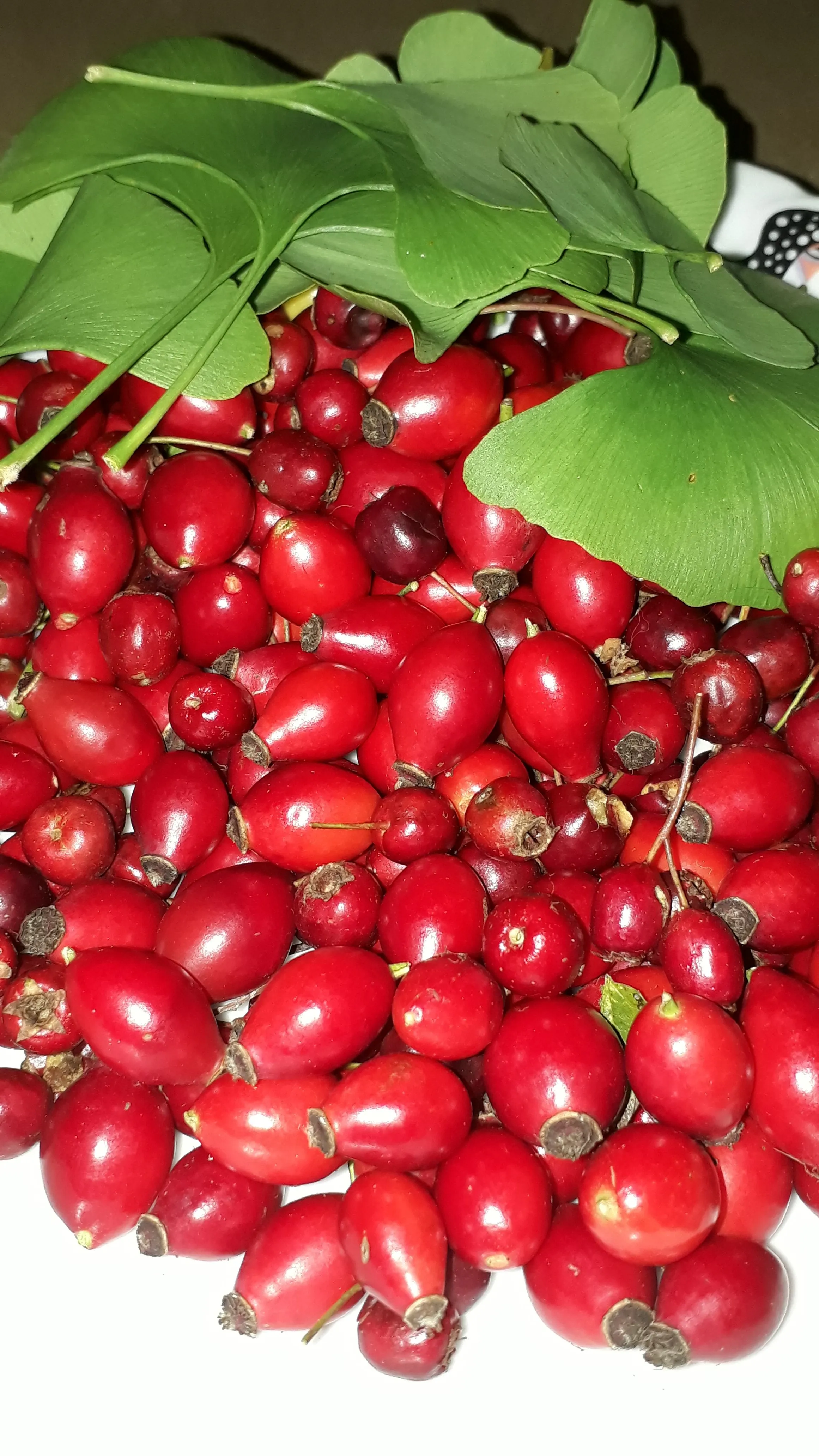Wild Garlic Season
Also known as Ramsons, bear's garlic, broad-leaved garlic and wood garlic.
You guessed it, it has strong garlicky smell! It likes damp, acidic, deciduous woodland, particularly close to streams and ditches.
What are the edible parts?
Leaves, flower buds, flowers and young seeds!
The edible parts have a varying potency of flavour:
- The leaves are fairly mild;
- The unopened flower buds are hotter and more garlicky;
- The flowers are hotter still;
- The seeds if eaten while green are like little garlic bombs! (Avoid the seeds once they have turned black: you could break a tooth on them).
Wild garlic has one of the longest seasons of the wild plants. The small, tender micro herb-like shoots start to appear from mid-February, with the plant reaching its full, leafy glory in late March.
Foraging season is between February to July, depending on where you live.
This year is particularly far behind. It's only started showing its leaves, which are still quite small to harvest. I'll give it another week or so. I was on Spring Foraging Course with Wild Food UK, and apparently we had a fairly dry winter and most reservoirs are pretty empty. I think this has a knock on effect on foraging season.
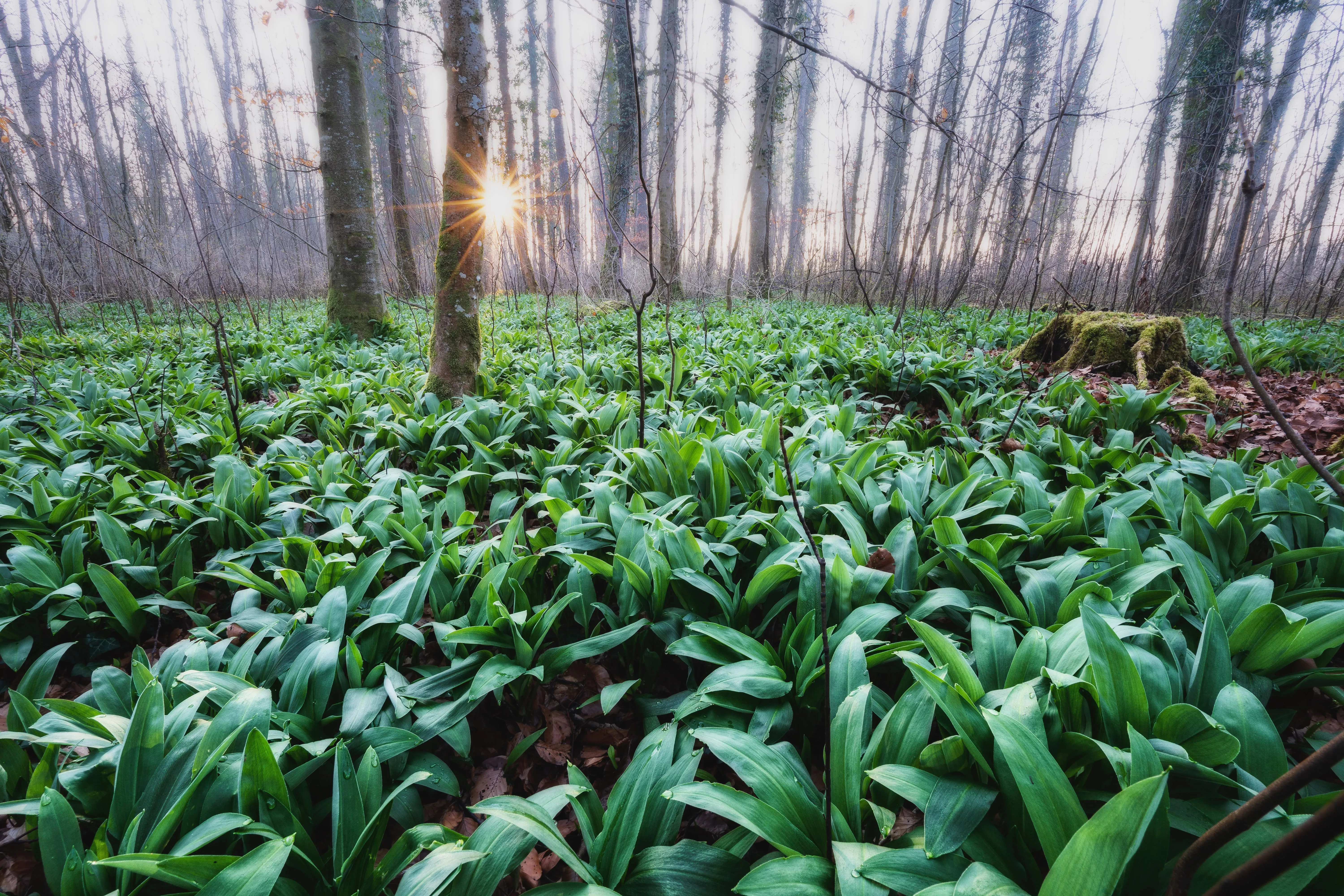
⚠️ Precautions
Always pick individual leaves only, to avoid gathering up those of any poisonous plants that may be nearby. By grabbing handfuls you risk picking up the poisonous leaves of Lily of the Valley or the irritant ones of Lords-And-Ladies, which often grown amongst wild garlic.
Good thing is, with its pungent smell this plant is very hard to confuse with anything else.
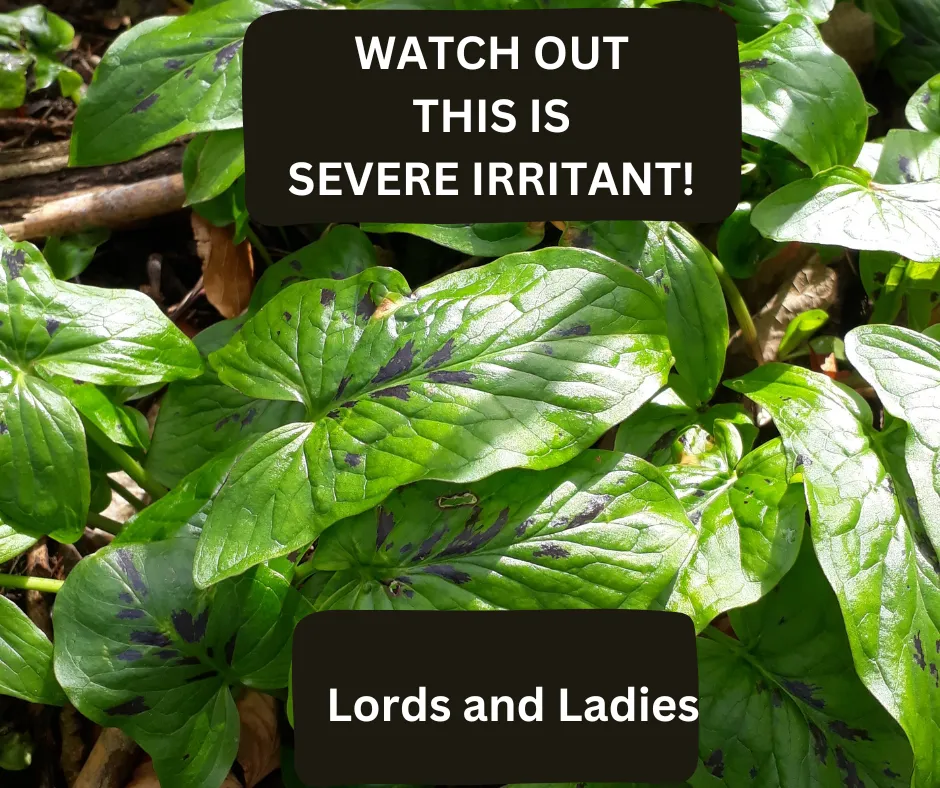
You can watch a quick video below from Wild Food UK. You will see that Ramson usually grow in abundance. And the smell is your best identifier.
🥣 Wild garlic can be used for soups, stews, salads, pesto, butter, frittata or anywhere you would use garlic. It is milder than garlic cloves, so is best added towards the end of cooking.
🧄 If you'd like Cool Free Wild Garlic Recipe Booklet check Cotswold Foraging Experience Instagram account here where you can get one! Big credit goes to Thomas Baumgartner! Thanks for putting this together!
I can share some tips from Thomas's booklet below how you can preserve wild garlic in various ways to be used later in the year.
1. Freezing: Freezing is a great way to preserve wild garlic's flavour and aroma. It's quick and easy, and the garlic can be used in a variety of recipes. To freeze wild garlic, first, wash and dry the leaves thoroughly. Then chop the leaves into small pieces or blend them into a paste. Place the chopped or blended garlic into an airtight container or freezer bag and freeze.
2. Pickling: Pickling is another way to preserve wild garlic, and it gives it a tangy and flavourful twist.
Pickled Wild Garlic: Wash and dry 300g of wild garlic leaves. In a saucepan, combine 250ml of white vinegar, 250ml water, 1 tbsp salt, 1tsp peppercorns, 1 tsp coriander seeds, 1 tsp mustard seeds, and 2 bay leaves. Bring the mixture to a boil, then reduce the heat and simmer for 5 minutes. Place the wild garlic leaves into jars and pour the hot pickling liquid over them, leaving about 1cm of space at the top. Seal the jars and leave them to cool before storing them in the refrigerator. The pickled wild garlic will be ready to eat after a few days.
Pickled Wild Garlic Buds: Make pickling liquid by placing 50g sugar in a pan with 50g of cider vinegar and 50g of water and bring to the boil, stirring to dissolve the sugar. Add a few pink peppercorns to it and season with a pinch of salt. Leave to cool. Once cooled place 1 handful of wild garlic buds in a sterilised jar and pour the pickling liquid over the top. Leave to pickle in the fridge for a few days. Use within 6 months.
3. Drying: Drying wild garlic is a traditional method of preservation, and it can be used in many recipes, like soups, stews, or sauces. Dried Wild Garlic Leaves: To dry wild garlic, first, wash and dry the leaves thoroughly. Then spread the leaves out on a clean surface, like a baking tray, and leave them in a warm, dry place for several days until they are completely dry and brittle – alternatively you could use a food dehydrator. Store the dried leaves in an airtight container in a cool, dark place.
Wild Garlic Salt: Preheat the oven to 50°C. Put 50g of dried wild garlic leaves and 150g of sea salt into a food processor or blender and blend until the mixture is fine and well combined. Spread the mixture out onto a baking tray and place it in the oven for 2-3 hours until completely dry. Store the wild garlic salt in an airtight container in a cool, dark place. Use it to season meat, fish, vegetables, or pasta dishes.
4. Infusing: Infusing wild garlic in oil or vinegar is another way to preserve its flavour and aroma. Infused Wild Garlic Leaves: To infuse wild garlic, first, wash and dry the leaves thoroughly. Then place the leaves in a sterilized jar and cover them with oil or vinegar. Seal the jar and leave it in a cool, dark place for a few weeks, shaking it occasionally to distribute the flavours.
Wild Garlic Vinegar: Wash and dry 100g of wild garlic leaves, chop the leaves and put them into a jar and add 500ml of cider vinegar. Shake the jar once a day for 4 weeks and then strain and bottle it.
Wild Garlic Oil: Wash 100g of wild garlic and blanch in boiling water for 1 minute. Roughly chop the leaves and add to a blender or food processor blitzing it on low speed. Slowly mix in 100ml of olive oil whilst the blender is running. Continue this until you have a green liquid. Pass through a cheesecloth or fine sieve and then chill.
You can use wild garlic oil as a dressing for salads, a flavour enhancer for soups and stews, or a marinade for meats and vegetables. Just be aware that homemade garlic oil can pose a risk of botulism if not stored properly, so it's important to keep it refrigerated and use it within a few weeks.
I usually make a pesto, which is a must do for me every year. However, checking those options above I might also dry some and use it in colder months. I bough a food dehydrator early this year which will make the drying process much easier for me. And I might also do some wild garlic salt.
How about you? What options will you go for?
I hope it inspires you.🥰
Happy foraging!🚶♀️🚶♂️
From my heart ❤️ to your heart.❤️


